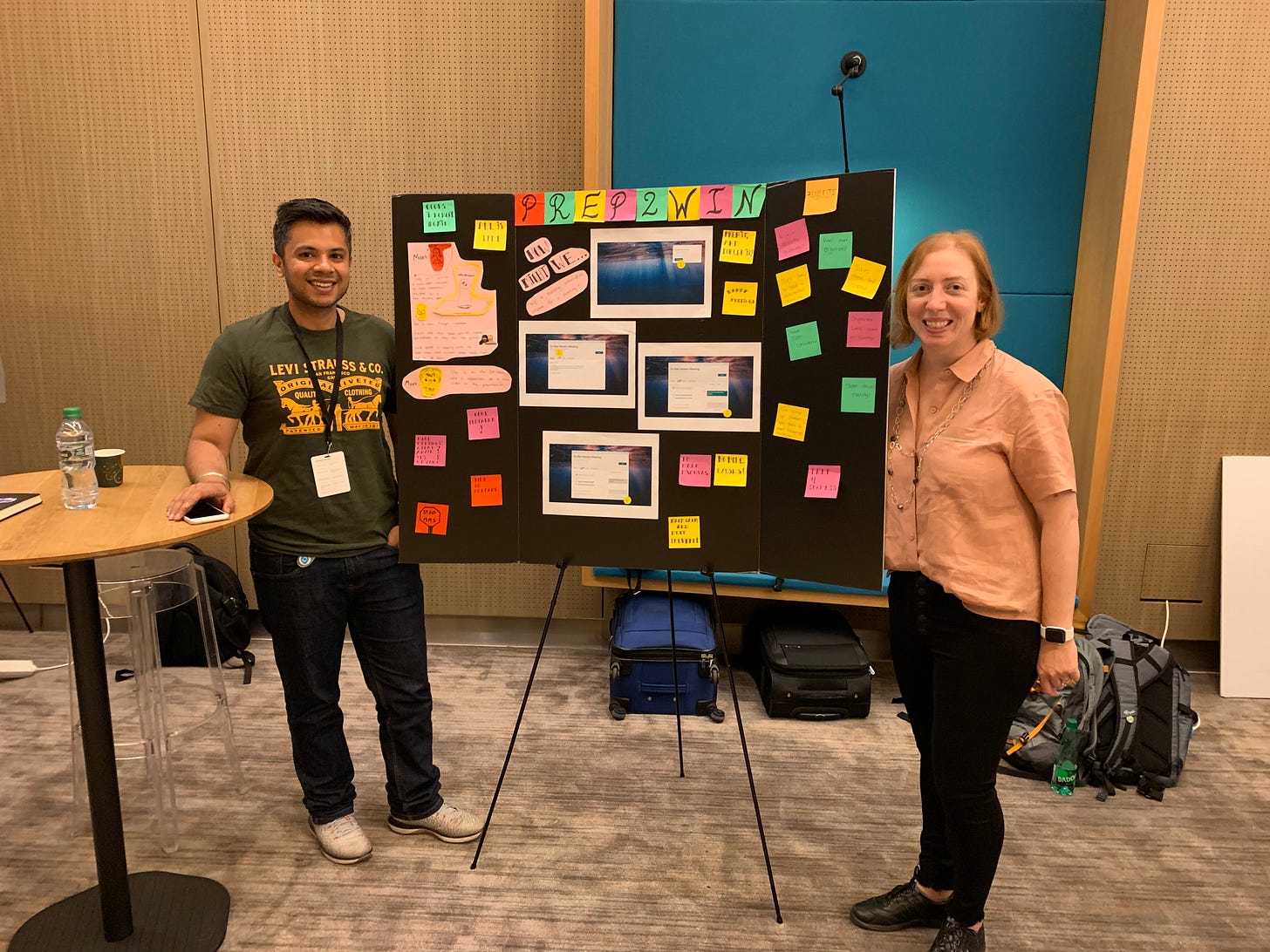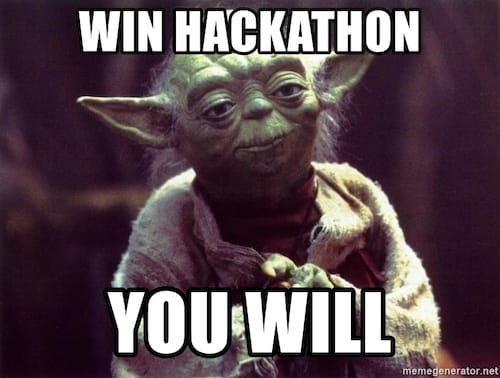👋🏻 Helen here with our weekly newsletter. Thanksgiving is this week, which is one of my favorite holidays of the year - as it is full of family annual traditions.
Adam and I host every year and there are certain things that always happen - turkey and mashed potatoes (I suggested replacing them with mac and cheese this year and was told by my family that this is a “yes and” situation). We also always decorate for Christmas the day after Thanksgiving, add an item to our Christmas village, and drink eggnog. I love the grounding of these rituals - they help our family live our values and strengthen bonds by creating a sense of belonging.
The same applies to the teams of product managers. I have observed in my 10+ years in the industry that product rituals are not just here to help reach desired outcomes but also create a bond with my colleagues, and provide me with tools to wade through ambiguity - both as an individual as well as a team leader.
As we start dry-brining the turkey and prepping the apple pie, I reflect on my favorite product ceremonies that I have adopted over the years.
Thanksgiving, November 2013
🧍🏼♀️Outcome: Build products grounded in customer empathy
A core job of a Product Manager is to understand the customer and their need. There is a myriad of approaches here - customer interviews and shadowing, research and data analysis, compete tear downs, writing press releases/product announcements first, and conferences where you foster a customer connection in order to understand what the user is actually trying to do and why.
My favorite two rituals:
📝 Press Releases: Draft a mock press release to help the team visualize how the finished product will be announced to customers. This is a common practice at Amazon and a best practice that I try to insert into daily product-making as often as possible. Template here
What I love about this is it forces me to explain the customer problem and the solution that is coming in words that real people can understand. Additionally, it puts technology in service of the customer’s need. Finally, it also forces the product manager to simplify and get to the point.
🖌️ Design Sprints: Spend 5 days with customers, designers, and developers co-creating and designing a prototype solution. When I worked at Microsoft, we ran customer connection conferences focused on this and then would have a “product fair” after 5 days with a readout. Resources: The Sprint Book. Design sprints also give you space to ask the 5 Why’s - which helps to get to the bottom of the issue that a user is facing.
The value of in-depth customer connection and sitting together in a room with the cross-functional team cannot be undervalued - it is grounding and inspiring. In the B2B space, be mindful that the participants in the sprint is often the buyer and not the end user. Oftentimes, the representatives in the sprint will be speaking on behalf of the users, which is insightful but often incomplete in painting the picture.
Project presentation after a spring design at a conference in Paris in 2018
🏆 Outcome: Celebrate success
There are many ways to recognize and reward product makers and hitting the mark on this requires intentionality and work. You can celebrate success at all hands by calling out good work, sharing private praise, shining on teams in front of their leaders, and of course, promoting and rewarding people with money. There are also lower-stakes ways to help people be seen for the work that they do which I try to do systematically.
My favorite rituals:
Demo Fridays - I love it when teams are in the groove and have a regular culture of demoing their work every two weeks - big and small. In some teams I’ve been on, we’ve paired this with snacks and a Friday social, other teams do it first thing Friday morning with bagels and coffee, in the post-pandemic world, they are now mostly remote. I love it when these sessions are open to as many people as want to come but informal, taking the pressure off of a demo in a large forum but giving an opportunity for teams to share and celebrate their progress and work.
Regular kudos - I reserve time at the end of the week to share gratitude to people on my team and cross-functional partners. Some examples of things I’ve done is send an example of good work to the team calling out why I liked it, use our company’s public praise slack channel to shine on people, or send a private note to managers of folks who have done great things. It’s easy to get busy and not make time for this, but I know firsthand how much it means to people when they receive praise and how much more invested they are in their work as a result.
📈 Outcome: Impact not Activity
It is easy to get bogged down in a slew of activities in the day-to-day of a product manager, especially because so much of our work is “in the seams.” PMs don’t code or design and yet are held accountable for a lot of things going right. So to keep perspective, it’s critical to have a way to check the work and make sure it’s driving toward a result that matters and tailor activities/inputs accordingly. Data is a key way to see if impact is being achieved and successful teams have ritualized and standardized on ways to talk about data in the context of business results.
Favorite ritual:
Monday Morning Dashboard Reviews: When I ran a product team at Microsoft with a sizable MAU (monthly active usage), I set time aside every Monday morning to look at pre-created dashboards (big shoutout to Amplitude which was easy to use to drill down into data) to review how my product was doing. It was great to start my week off understanding the data and use that as context for investments and daily conversations.
One of my colleagues had this quote in his signature: “You can’t manage what you don’t measure” - which is a fantastic reminder for product managers.
💡Outcome: Foster Learner’s Mindset
By the nature of working in tech, constantly learning and evolving is a critical part of the job. So creating an environment where learning is supported is key to a product team’s success. There are many ways to learn academically (see my last post on Reforge) but my favorite rituals are those that facilitate hands-on learning from lived experiences.
My favorite rituals:
Hackathons - whether it is a day or a week, having periodic timeouts from the daily work to play with tech and think outside your backlog is energizing. When I was at Microsoft, teams participated in a Fix, Hack, Learn twice a year for a week at a time. Microsoft did a great job encouraging this time to be meeting free, providing food, and a space for work and readouts via science fair-type exhibits. At Guild, we just completed our annual Hackathon that lasted for 3 days. We had exec judges and prizes and high participation across the disciplines.
Monthly Retros - Doing timely and regular retros on projects as well as how the team is doing is a regular ceremony that I both run and participate in. It’s just as important to retro things that have gone well as well as things that went off the rails with the goal of figuring out lessons to learn for the future. Depending on the sensitivity of the topic, sometimes it’s great to have a neutral party to run these. I use EasyRetro app to capture the conversation and also have a Spotify playlist that I use to kick these off. It’s also important to recognize when you are doing retros for the sake of doing an activity as opposed to taking input from it to change something in the future.
Closing Thoughts
I’m glad that I took a step back this week to remind myself of all the professional traditions that I am either a part of today or have been in the past. This post made me reflect on which of these rituals I am doing right now, how often, and to what end.
As always, I am grateful for the opportunity to share this space with you and want to wish you a Happy Thanksgiving if you are celebrating! If you are interested in other related topics, check out My 10 Favorite Productisms by Adam and 💎 Hidden Gems for PM's Inside Taylor Swift Lyrics.






